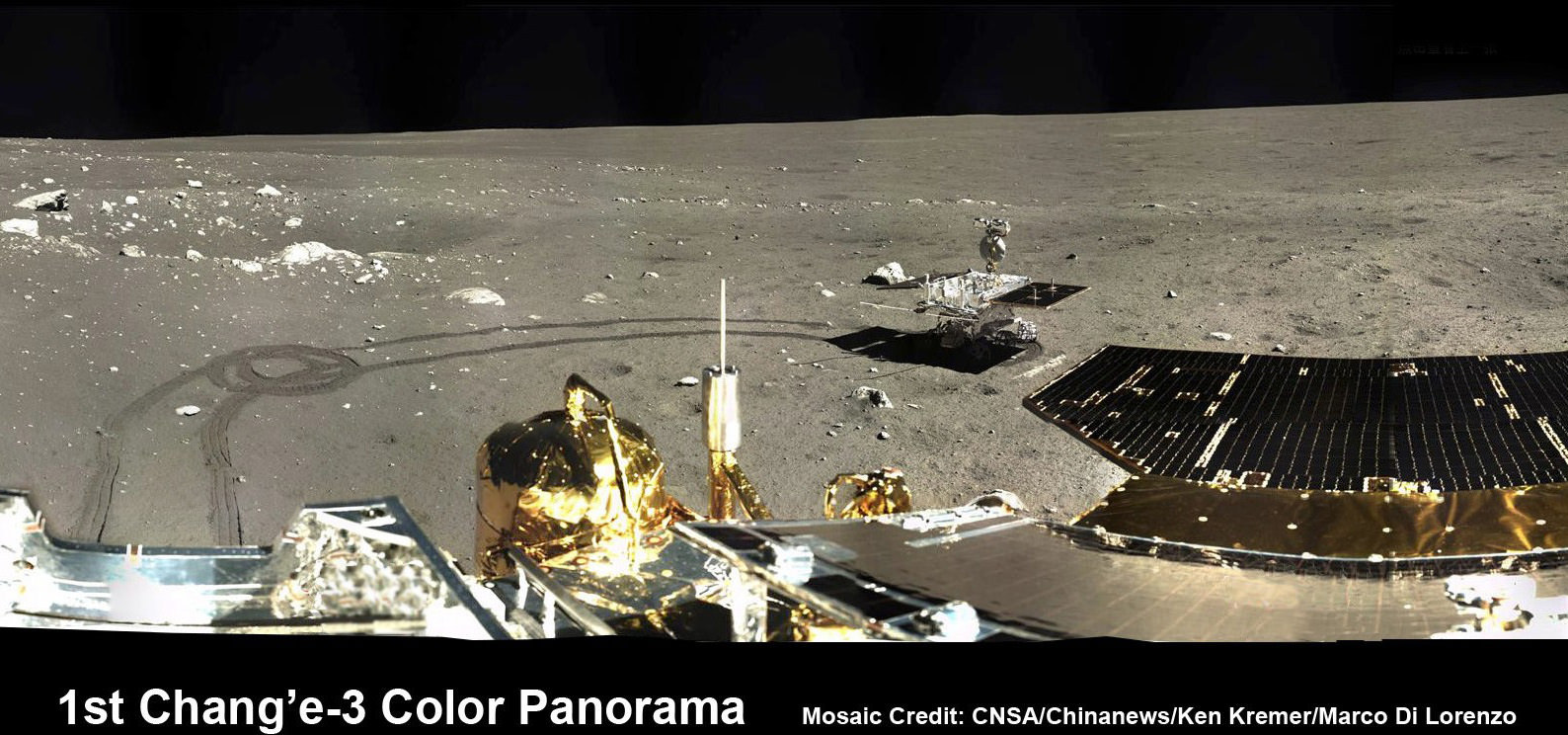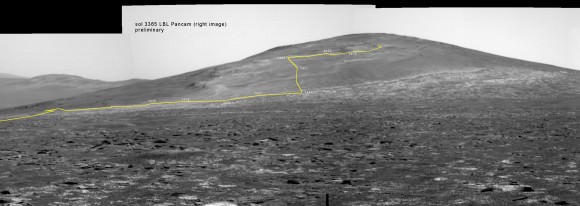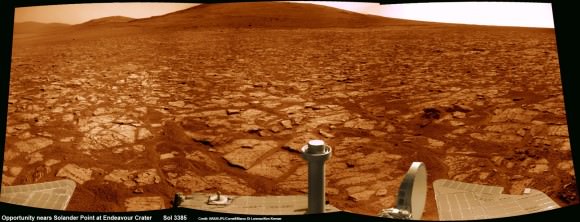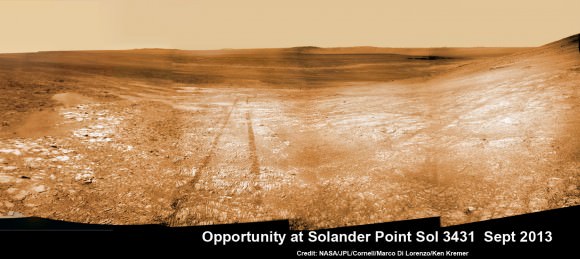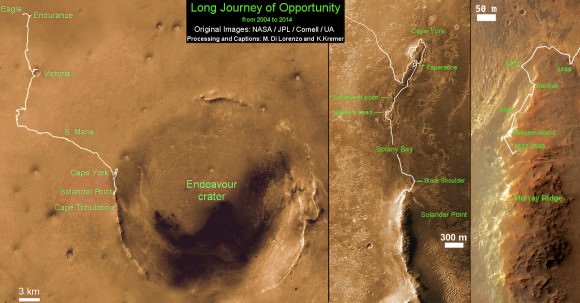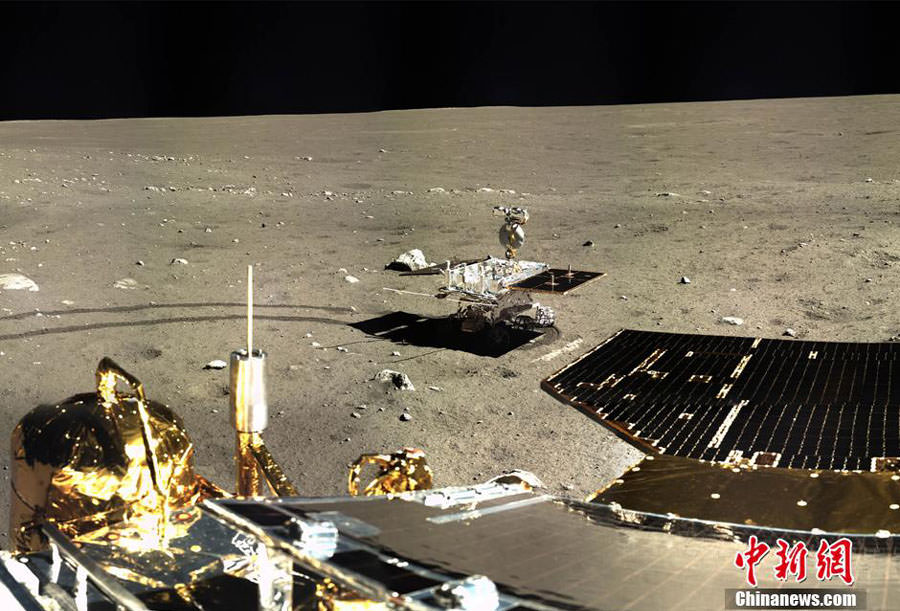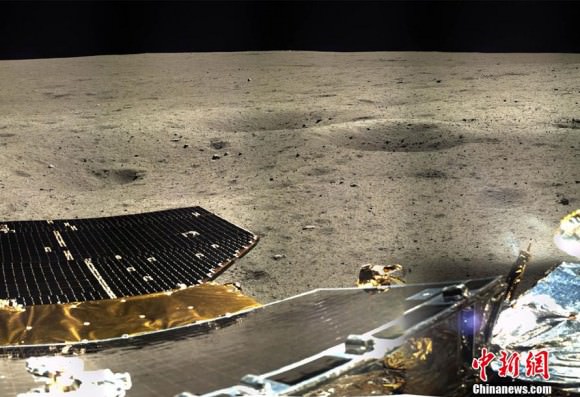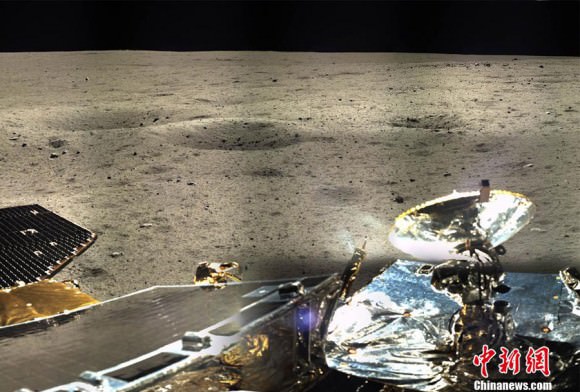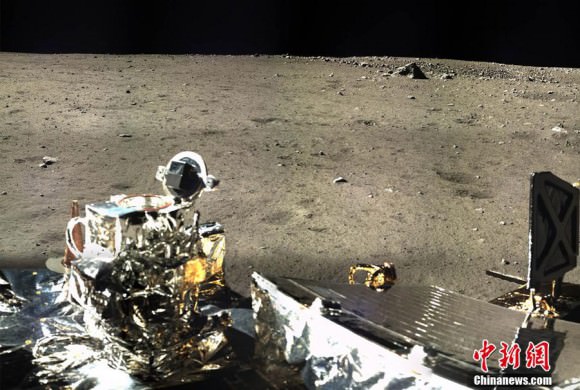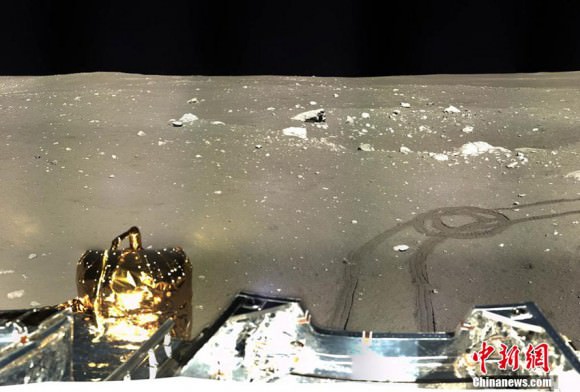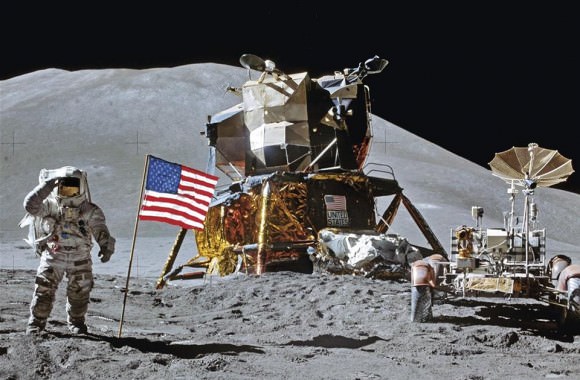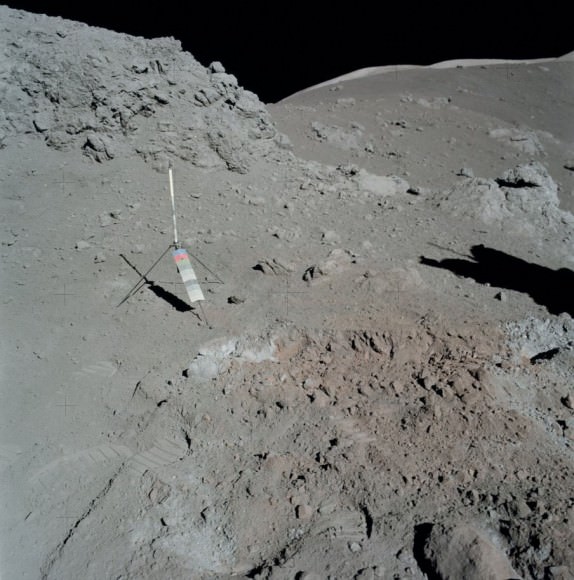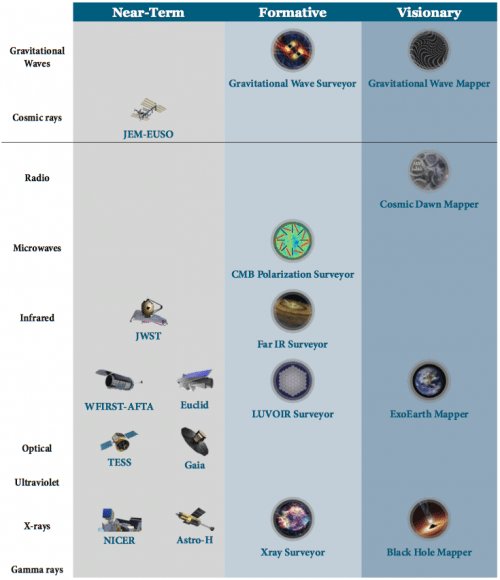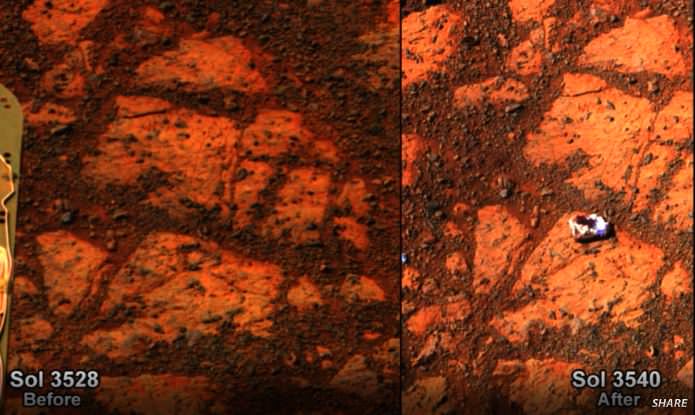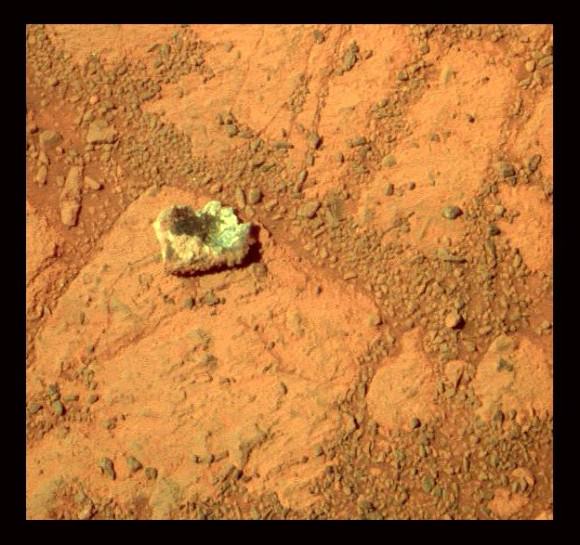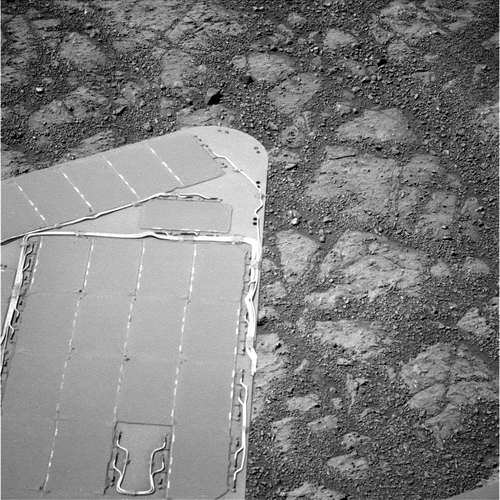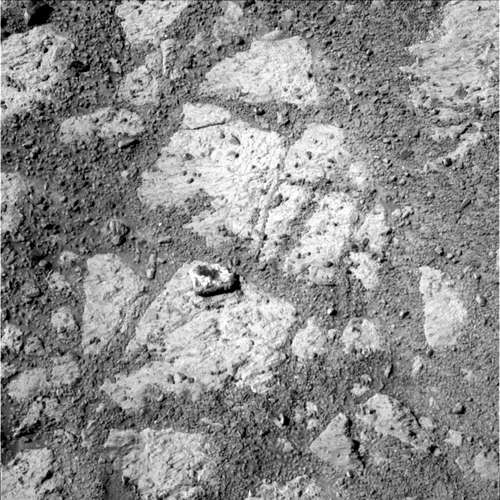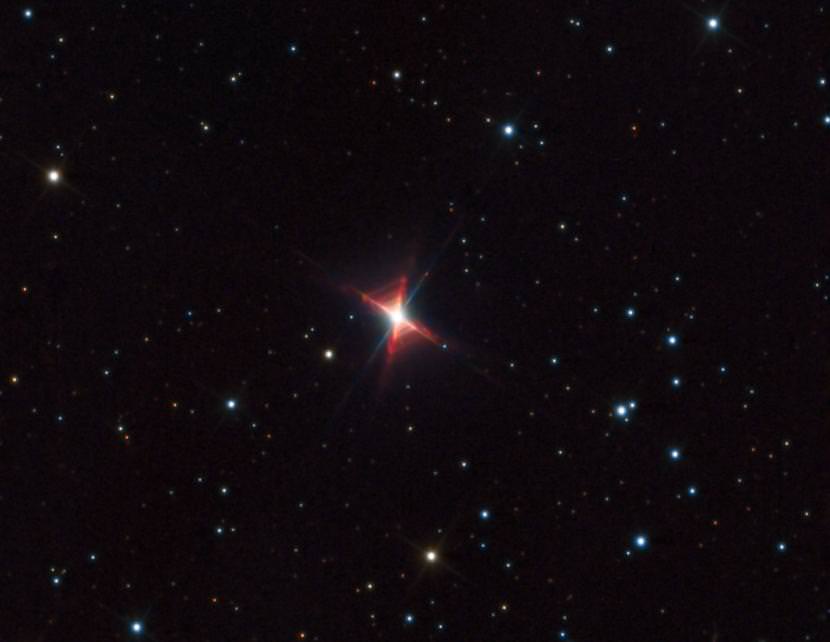1st 360 Degree Color Panorama from China’s Chang’e-3 Lunar Lander
Portion of 1st color panorama from Chang’e-3 lander focuses on the ‘Yutu’ lunar rover and the impressive tracks it left behind after initially rolling all six wheels onto the pockmarked and gray lunar terrain on Dec. 15, 2013. Mosaic Credit: CNSA/Chinanews/Ken Kremer/Marco Di Lorenzo
See below – the complete panoramic version as well as a 360 degree interactive version
Will humans follow?[/caption]
Chinese space officials have at last released much higher quality versions of the 1st color imagery captured by China’s first spacecraft to soft land on the surface of the Earth’s Moon; Chang’e-3.
For the enjoyment of space enthusiasts worldwide, we have assembled the newly released imagery to create the ‘1st 360 Degree Color Panorama from China’s Chang’e-3 Lunar Lander.’ See above and below two versions in full resolution, as well as an interactive version – showing the fabulous view on the 1st Lunar Day.
The moonscape panorama shows the magnificent desolation of the pockmarked gray lunar plains at the mission’s touchdown site at Mare Imbrium. It is starkly reminiscent of NASA’s manned Apollo lunar landing missions which took place over 4 decades ago – from 1969 to 1972.
And this spectacular view may well be a harbinger of what’s coming next – as China’s leaders consider a manned lunar landing perhaps a decade hence, details here.
See above a cropped portion – focusing on the piggybacked ‘Yutu’ lunar rover and the impressive tracks it left behind after it initially rolled all six wheels onto the surface; and which cut several centimeters deep into the loose lunar regolith on Dec. 15, 2013.
The beautiful imagery snapped by China’s history making Chang’e-3 lunar lander on 17 and 18 December 2013 – during its 1st Lunar day – was released in six separate pieces on the Chinese language version of the Chinanews website, over the weekend.
See below the compete version of the 360 degree panorama stitched together by the imaging team of scientists Ken Kremer and Marco Di Lorenzo.

This 1st color panorama from Chang’e-3 lander shows the moonscape view all around the landing site after the ‘Yutu’ lunar rover left impressive tracks behind when it initially rolled all six wheels onto the pockmarked and gray lunar terrain on Dec. 15, 2013. Mosaic Credit: CNSA/Chinanews/Ken Kremer/Marco Di Lorenzo – kenkremer.com
We have also enhanced the imagery to improve contrast, lighting and uniformity to visibly reveal further details.
For comparison, below is the initial black and white panoramic version seen by the landers navigation camera – which we assembled from screenshots taken as it was twirling about in a CCTV news video report.

Alas, one bit of sad news is that it appears the 1200 kg lander’s color camera apparently did not survive the 1st frigid night since it reportedly wasn’t protected by a heater.
For a collection of new and higher quality Chang’e-3 mission photos – including the 1st portraits of the Earth taken from the Moon’s surface in some 40 years – please check my recent article; here.
Check this link – to view a 360 degree interactive version of the first Chang’e-3 color panorama – created by space enthusiast Andrew Bodrov. He has added in a separate image of the Earth snapped by the lander.
China’s action to release higher quality imagery is long overdue and something I have urged the Chinese government to do on several occasions here so that everyone can marvel at the magnitude of China’s momentous space feat.
We applaud the China National Space Administration (CNSA) for this new release and hope they will publish the higher resolution digital versions of all the imagery taken by the Chang’e-3 mothership and the Yutu rover and place everything onto a dedicated mission website – just as NASA does.
Here’s the pair of polar views of the 360 degree lunar landing site panoramas (released last week) – taken by each spacecraft and showing portraits of each other.
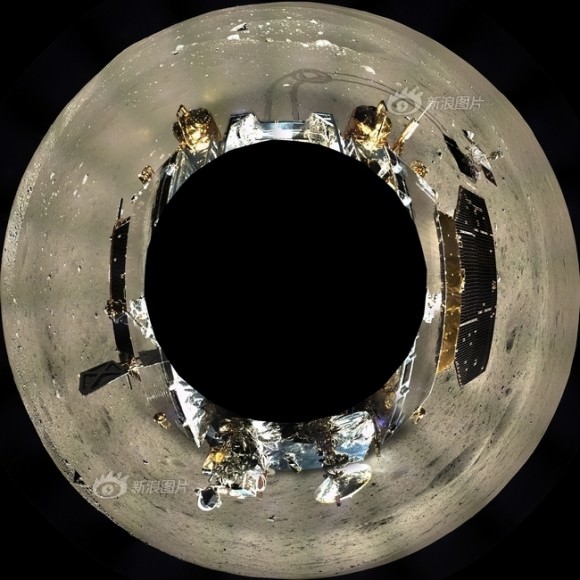
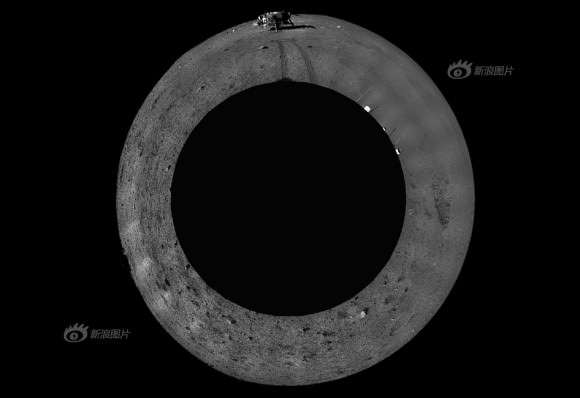
China’s history making moon robots – the Chang’e-3 lander and Yutu rover – are now working during their 2nd Lunar Day. They have resumed full operation – marking a major milestone in the new mission.
It’s remarkable to consider that although they were just awoken last weekend on Jan. 11 and Jan. 12 from the forced slumber of survival during their long frigid 1st lunar night, they are now already half way through Lunar Day 2 – since each day and night period on the Moon lasts two weeks.
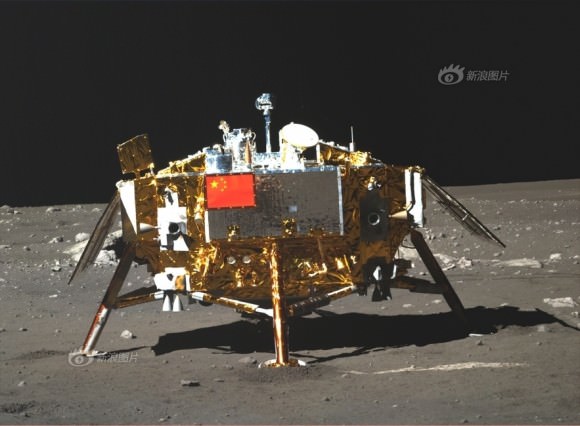
China is only the 3rd country in the world to successfully soft land a spacecraft on Earth’s nearest neighbor after the United States and the Soviet Union.
Meanwhile as China’s Yutu rover trundles across pitted moonscapes, NASA’s Opportunity rover is in the midst of Martian mountaineering at the start of Decade 2 on the Red Planet and younger sister Curiosity is speeding towards the sedimentary layers of Mount Sharp.
Stay tuned here for Ken’s continuing Chang’e-3, Orbital Sciences, SpaceX, commercial space, LADEE, Mars and more news.

